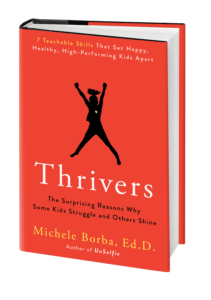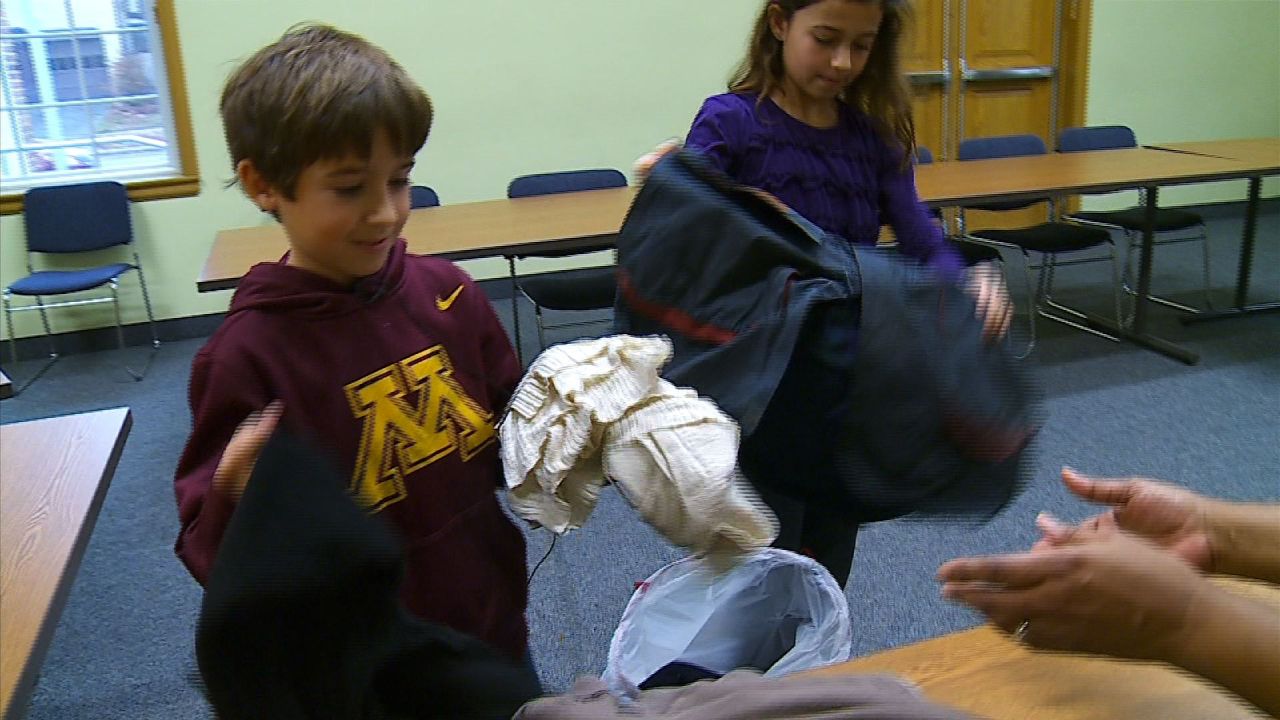Raising Kids Who Want to Make a Difference in their World
The key to raising a Changemaker is making sure that the project is meaningful for the child and driven by heart, and not chosen to look good on a future resume or college application.
The first time I realized the power of involving kids in social justice projects was when one of my sons was just four. The two of us had gone to see the movie “The Bear.” Because it was rated as family oriented I wasn’t prepared for the scene in which a bear is brutally killed. Well, neither was my four-year-old. Zach was devastated, and he sobbed all the way home. At some point during our drive, he exclaimed adamantly that the president of the United States should make a rule against killing bears.
Probably to appease my son more than anything else, I suggested that he write the President a letter, and as soon as we drove into our driveway, Zach turned into an animal rights activist. He ran inside; grabbed an envelope, paper, and pencil; and asked me to write down his words. Within five minutes, he’d written a letter to the White House pleading with the most powerful person in the free world to write a law stopping the “bear killers.” He then sealed and stamped the envelope, and confidently put it in the mailbox.
What I never expected was a response. Over the next weeks Zach received dozens of letters from various government officials regarding animal rights, hunting laws, and even a few about bears. And the satisfaction on Zach’s face each time he opened a letter was priceless: “See, Mom,” he’d tell me, “they know killing those bears is wrong. They’re going to do something. I helped the bears.”
That day my four-year-old taught me just how important it is to help kids know that their actions can make a difference.
I also learned a very important lesson: it’s never too early to start helping children to want to better their world.
Changemakers are kids who don’t stand back when they see a problem, but instead step in to make a difference. Here a few altruistic kids who are making the world a better place:
Dylan Siegel, age six, knew he had to help when his best friend, Jonah Pournazarian, was diagnosed with an incurable liver disorder, and so he wrote Chocolate Bar. His book has raised more than $1 million that has results in new gene-therapy treatments.
Rachel Wheeler, age nine, learned that Haitian kids eat mud cookies and live in cardboard house because they’re so poor. She vowed to make a difference by running bake sales, selling homemade potholders, and asking for donations. In just three years, her fund-raising efforts were enough to erect twenty-seven concrete two-room homes in a neighborhood in Haiti now dubbed Rachel’s village.
Yash Gupta, age 14, started thinking about the millions of kids who can’t afford corrective eyewear when his own glasses broke. So her create Sight Learning and began collecting used eyeglasses from optometrists and donated more than 9,500 pairs to kids in Haiti, Honduras, India and Mexico.
But the caring deed doesn’t have to one that makes the cover of TIME and win a Nobel Peace Prize. Simple, everyday kindness gestures are powerful like teens in Chicago who are dropping off Quarantine gift bags (filled with homemade cookies, candy and a hand-written “We’re thinking about you” note) on the driveways of in-bound, stressed-out friends. Or the kids in San Jose who are using chalk to write inspiring notes on sidewalks to the community. “You can’t believe how good it makes you feel,” one girl told me.
Altruistic kids feel another’s pain or recognize a social problem and are driven to find solutions to help. And they do so not for accolades, trophies, rewards or to “look good” on college applications, but because they are driven by the passion of their hearts. Such is the power of empathy! But there are also unlooked benefits: kids who act on their empathetic urges to make a difference recognize their strengths and interests (and so their confidence grows), they stick to the task (and their perseverance stretches) and along the way they discover that giving is of the best ways to reduce stress (so they increase their self-control). It’s why doing for others is one of the best ways to boost resilience and help children learn to thrive. Kids who are resilient are so because they develop and use character strengths.
6 Ways to Inspire Kids to Want to Make a Difference
I’m convinced there is no more powerful way of boosting kids’ character and developing Caring Mindsets and Moral Identities than getting them involved in an issue they consider unjust. It also inspires their empathy and affirms that kids at any age can make a difference.
But how do you start? That’s the question that haunted me. I decided to find the answer by asking parents whose children were actively involved in volunteering in community projects and passionate about their causes.
Here are six steps parents used to help their kids find their inner passion and become Change Makers.
Step 1: Find what concerns your child
Tune into problems that concern your child and start by looking around your neighborhood. For example: property that needs cleaning up, a park where kids no longer feel safe playing, homeless people living on the streets, shelters that need sprucing up, or elderly people who are lonely. Many parents regularly discuss news issues as a family to find out what concerned their children like Internet hate sites, bullying, homelessness, gender inequality, poverty, human rights, sex trafficking, racial injustice.You might also visit service projects together or take your child with you as your volunteer so your child sees possibilities and you can get a sense of his passions or her concerns.
Step 2: Research the topic together
Next, help your child find out information about the problem. The library, newspapers, and the Internet are always good sources. She might also ask teachers, relatives, coaches, or city officials. Call and write organizations familiar with the topic for more ideas.
Step 3. Brainstorm possibilities
Next, brainstorm ways your child could make a difference. Maybe she wants to help the homeless, and brainstormed: build a shelter, put beds in the park, give out blankets, and raise money for cots. Now help her choose a manageable idea that she cares about. She might realize that building a shelter isn’t realistic (right away, anyway), but she could canvass the neighborhood for blankets.
Every parent of a Changemaker told me these key points: “Think big, but start small. Start in your own community and always begin face to face.” The moment that their child saw the gratitude on the other person’s face was transformational. The initial face to face encounter is what activated the child’s empathy and ignited their passion to want to continue doing more to help. So start any charitable, giving act ideally face-to-face.
Step 4. Enlist others to help
If your child enjoys being with others, find others who agree with her cause. Doing so helps build energy and strengthens commitment. Some kids form clubs with neighbors, classmates, church members, or friends. The more the merrier.
One teen boy told me that he wanted to help out at a homeless shelter his senior year. His concern – time. So his mom enlisted his girlfriend and her mother so he could see her and they would be a foursome! “Volunteering became our time together,” he said, “and it was transformative. I realized I could make a difference on people’s lives and now I’m pursuing a career in social work. But I also learned things about my mom when we were together. She kept working at that shelter even after I went to college. I never realized how much helping others meant to her. It made me love her even more.”
Step 5. Plan for success
Help her list what resources and people she will need. You might post a large monthly calendar for her to jot down volunteer days and times. Detailed plans increase the odds of success.
Getting started is often the hardest, so you might ask, “What is the first thing you need to get started?”
Stress that plans never go smoothly, so help your child change any areas that need correcting. Then encourage her to not look at those as mistakes but as “learning opportunities” in disguise!
Step 6. Celebrate efforts
Whether your child writes one letter or a 100, donates one blanket or 50, serves one meal or dozens, support his efforts and affirm that he’s helping to make a difference. That is the exact message our children need to realize that they can make their world a better place.
Dr. Ervin Staub found that children who are given the opportunity to help others tend to become more helpful especially if the impact of their helpful actions is pointed out. It nudges kids to develop a growth mind-set about empathy as well as seeing themselves as caring people. So encourage your child to reflect on her servicing experiences: “What did the person do when you helped? How do you think he get? How did you feel? Is lending a hand easier than it used to be?”
And remind your kids that they are kind people, and their caring efforts are making a difference!
Join me! It’s time to start an UnSelfie Revolution and Raise Thrivers!
 The ideas in this post are from my book, UnSelfie: Why Empathetic Kids Succeed in Our All About Me World that describes how to cultivate the Nine Crucial Habits of Empathy, and 300 strategies parents and teachers can use from toddlers to teens to do so.Did you know that teens today are 40 percent less empathetic than those 30 years ago? That is tragic news for our children and society. For starters, it hurts kids’ moral character, and leads to bullying. Also it correlates with more cheating and less resilience. And once kids grow up, a lack of empathy hampers their ability to collaborate, innovate, and problems solve-all must-have skills for the global economy.
The ideas in this post are from my book, UnSelfie: Why Empathetic Kids Succeed in Our All About Me World that describes how to cultivate the Nine Crucial Habits of Empathy, and 300 strategies parents and teachers can use from toddlers to teens to do so.Did you know that teens today are 40 percent less empathetic than those 30 years ago? That is tragic news for our children and society. For starters, it hurts kids’ moral character, and leads to bullying. Also it correlates with more cheating and less resilience. And once kids grow up, a lack of empathy hampers their ability to collaborate, innovate, and problems solve-all must-have skills for the global economy.
I’m excited to announce the publication of my new book, Thrivers: The Surprising Reasons Why Some Kids Struggle and Others Shine on March 2. For forty years I’ve wondered why some kids have a strong, “We’ve got this!” attitude and discovered the science of resilience. Thrivers are made, not born – and it’s because they have learned the skills and habits of seven essential character strengths. Thrivers is packed we science-backed ways to instill those traits in children so we raise mentally and morally strong kids who are prepared to live and thrive in an uncertain world. I hope you like it!


